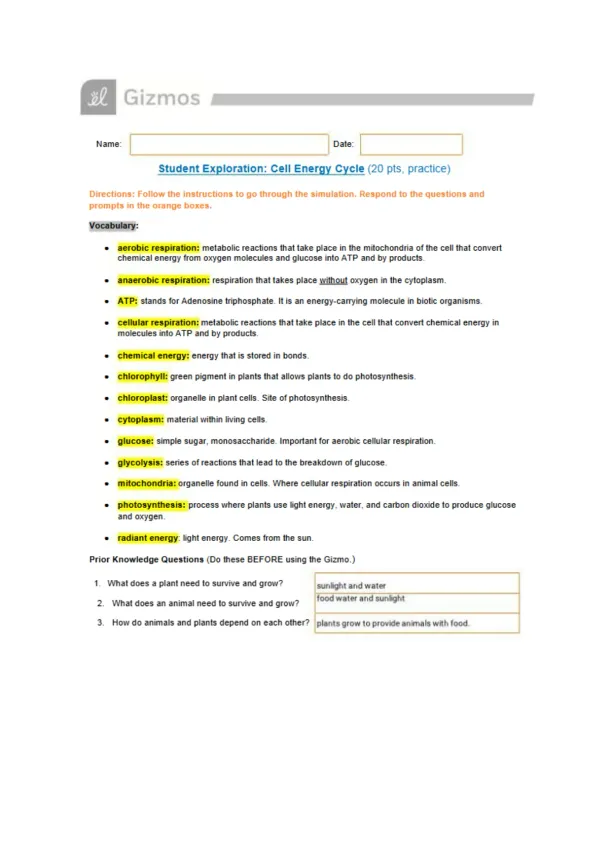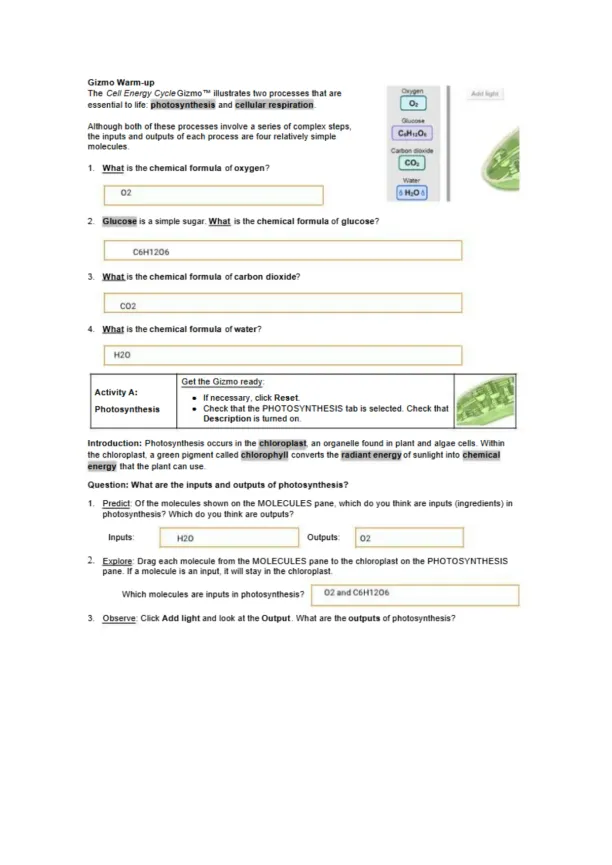Page 1

Loading page image...
Page 2

Loading page image...
Explore how photosynthesis and cellular respiration cycle energy through plant and animal cells. Use the simulation to visualize how glucose and ATP are created, stored, and used by cells.
Loading page image...
Loading page image...
This document has 6 pages. Sign in to access the full document!